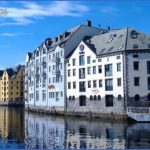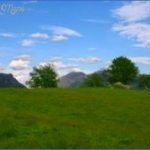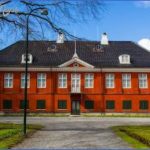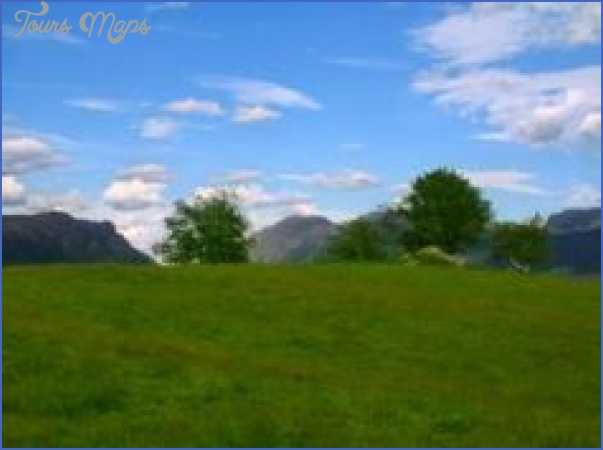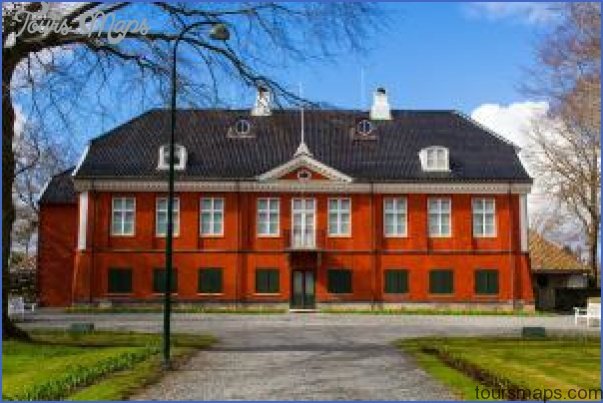On KUNGSHOLMEN (King’s Island), separated from the rest of the town by a narrow channel, is the ‘Town Hall (.Stadshuset), the great landmark and emblem of Stockholm. At the SE corner of the building (Ragnar Ostberg, 1 911 23) is a square tower crowned by a lantern, on the tip of which (106 m 350 ft) are the three golden crowns of the Swedish coat of arms. From the platform under the bell cote (elevator three-quarters of the way up), there is a superbview. On the N wall is a mobile sculpture of St George and the dragon. The carillon in the tower plays twice daily in summer, at noon and 6 p.m. Under a pillared canopy at the foot of the
S side of the tower is a recumbent figure (G. Sandberg) of Birger Jarl, founder of Stockholm. The Town Hall contains offices and reception rooms, including the Blue Hall, a covered inner courtyard with a colonnade, the large Council Chamber and the Golden Hall, with magnificent mosaics.
A little W of the Town Hall, in Hantverkar-gatan, is the 17th c. Kungsholm Church. NW of the church, in Scheelegatan, is the Radhus (Law Courts; C. Westmann, 1911-15), and beyond it the Police Headquarters.
The OSTERMALM district, to the E, is bounded on the W by Birger Jarlsgatan and on the S by the inlet of Nybrovik. Along the waterfront runs one of Stockholm’s finest streets, Strandvagen, with a number of embassies. The Army Museum in Riddargatan contains a large collection of uniforms and weapons. Nearby, in the parkoWumlegarden, is the Royal Library (built 1870-7, with later extensions), Sweden’s National Library. Among other rarities, it possesses the ‘Codex Aureus, an 8th c. Latin translation of the four Gospels. On the E side of the park, at No. 14 Sturegatan, is the Nobel Foundation, established by the Swedish chemist Alfred Nobel, in 1900, which annually awards five prizes for outstanding achievement in physics, chemistry, medicine, literature and the cause of peace. In Karlavagen is the Engel-brektskyrka, a granite and red-brick building (Lars Israel Wahlman, 1914). To the E, in Valhallavagen, we find the Stadium, a wooden structure built for the 1912 Olympic Games. To the N is the College of Technology.
In the southern part of Ostermalm the National Historical Museum (His-toriska Museet) occupies a building which also houses the Royal Coin Cabinet. Nearby are the headquarters of Swedish radio and television (Radiohuset), and a short distance away, in Borgvagen, is the Swedish Film Institute. In Djurgardsbrunnsvagen, the continuation of Strandvagen to the E, are the Museum of Maritime History, the Museum of Technology and the National Ethnographic Museum. To the NE rises the Kaknas Tower, 155 m (510 ft) high, with a restaurant and lookout platform.
Travel Scandinavia on a budget Photo Gallery
Maybe You Like Them Too
- The Best Cities To Visit in The World
- World’s 10 Best Places To Visit
- Coolest Countries in the World to Visit
- Travel to Santorini, Greece
- Map of Barbados – Holiday in Barbados

